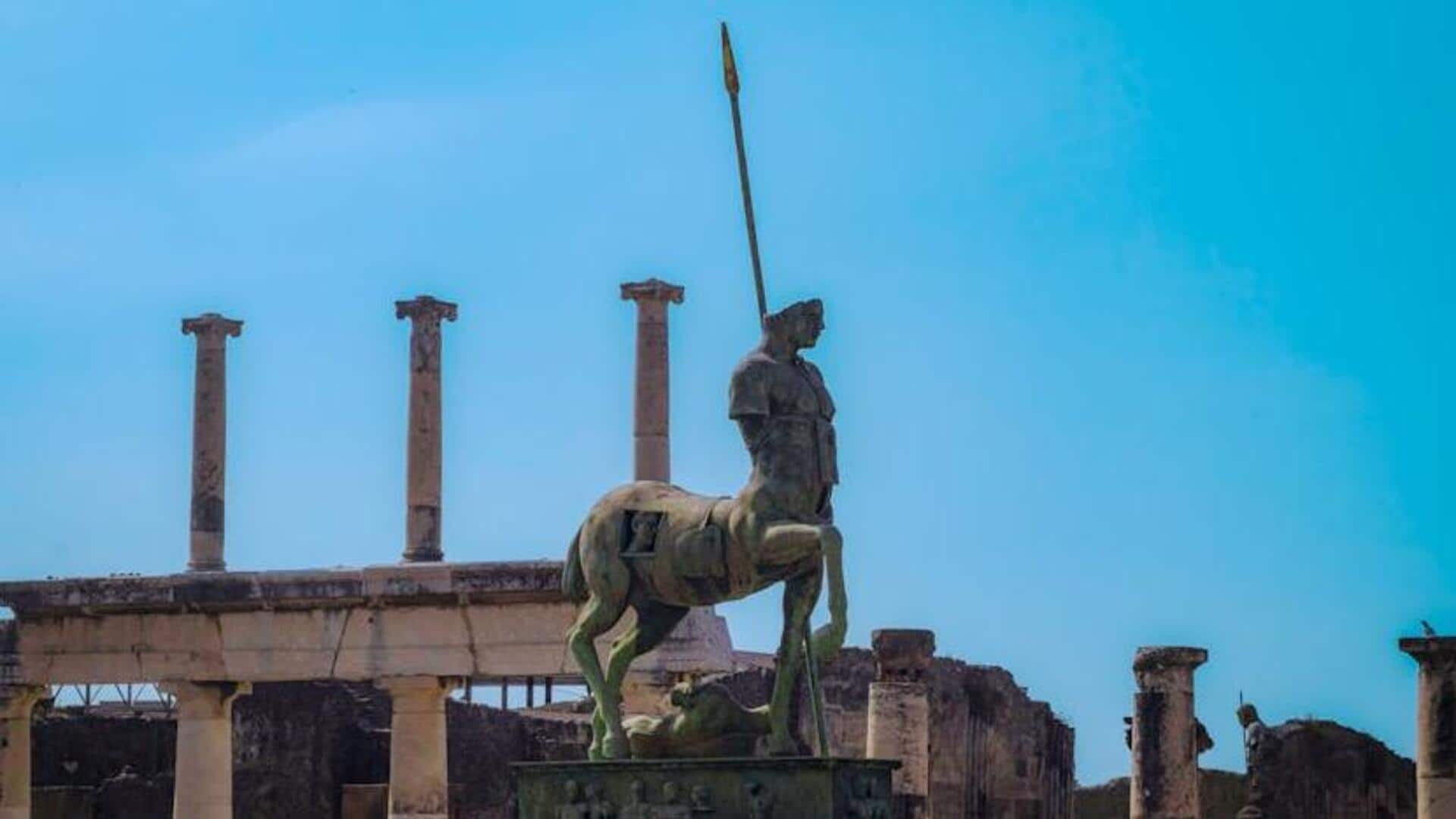
Discover Pompeii's ancient secrets with this travel guide
What's the story
Pompeii, nestled in the shadow of Mount Vesuvius, offers a unique glimpse into ancient Roman life. Frozen in time by the volcanic eruption in 79 AD, this archaeological site reveals detailed insights into the daily lives of its inhabitants. Exploring Pompeii is like walking through history, with each ruin telling its own story of a civilization that once thrived and then was suddenly silenced.
Recommendation 1
The Forum: Heart of public life
The Forum was Pompeii's bustling center where politics, commerce, and religion intertwined. Today, it stands as an expansive courtyard surrounded by remnants of important civic buildings. Walking through the Forum, visitors can imagine the vibrancy of market days and the solemnity of religious ceremonies held there. It's a must-visit to grasp the social and political life that pulsed through ancient Pompeii.
Recommendation 2
The amphitheatre: Gladiatorial games unveiled
Pompeii's Amphitheatre is one of the oldest surviving Roman amphitheaters in existence. This grand structure hosted gladiatorial games that entertained thousands. As you step onto the arena floor or sit on the ancient stone seats, you can almost hear the echoes of cheering crowds and clashing swords. It's a powerful reminder of Rome's love for spectacle and sport.
Recommendation 3
Villa dei Misteri: A glimpse into mystical rites
Just outside Pompeii's main city lies Villa dei Misteri (Villa of Mysteries), famous for its well-preserved frescoes depicting Dionysian mysteries. These vivid paintings offer a rare peek into ancient religious practices and beliefs. The villa itself showcases luxurious domestic architecture from two thousand years ago, making it an essential stop for those interested in art history and ancient religions.
Recommendation 4
The Lupanar: Understanding social norms
The Lupanar was Pompeii's largest brothel and provides fascinating insights into the social fabric and daily life aspects often left out from historical narratives. Its preserved rooms and explicit frescoes give visitors a candid look at ancient Roman sexuality and societal norms regarding pleasure. While it may not be suitable for all audiences, it remains an intriguing part of Pompeii's diverse urban landscape.
Recommendation 5
The baths: Leisure & community life
The Stabian Baths offer insights into leisure and engineering in ancient Roman society. These public baths were more than sites for cleanliness; they served as vibrant community centers where people socialized, exercised, and relaxed together, highlighting the importance of communal well-being in Roman culture. Their sophisticated heating systems, still visible today, underscore the advanced engineering skills of the Romans.